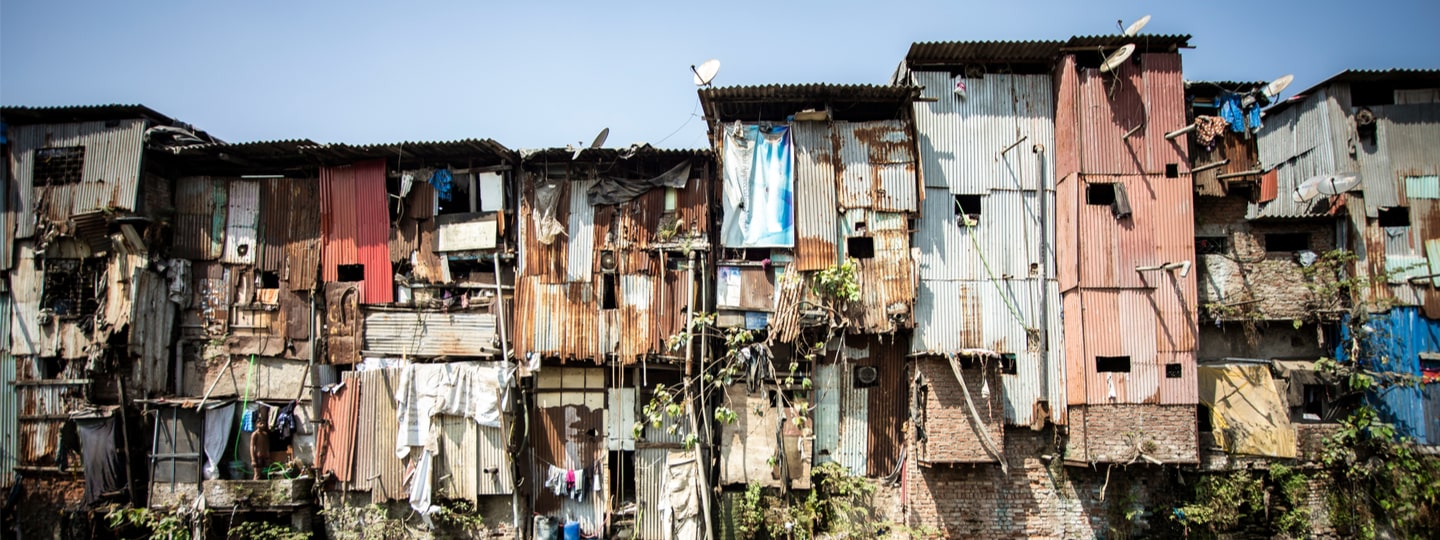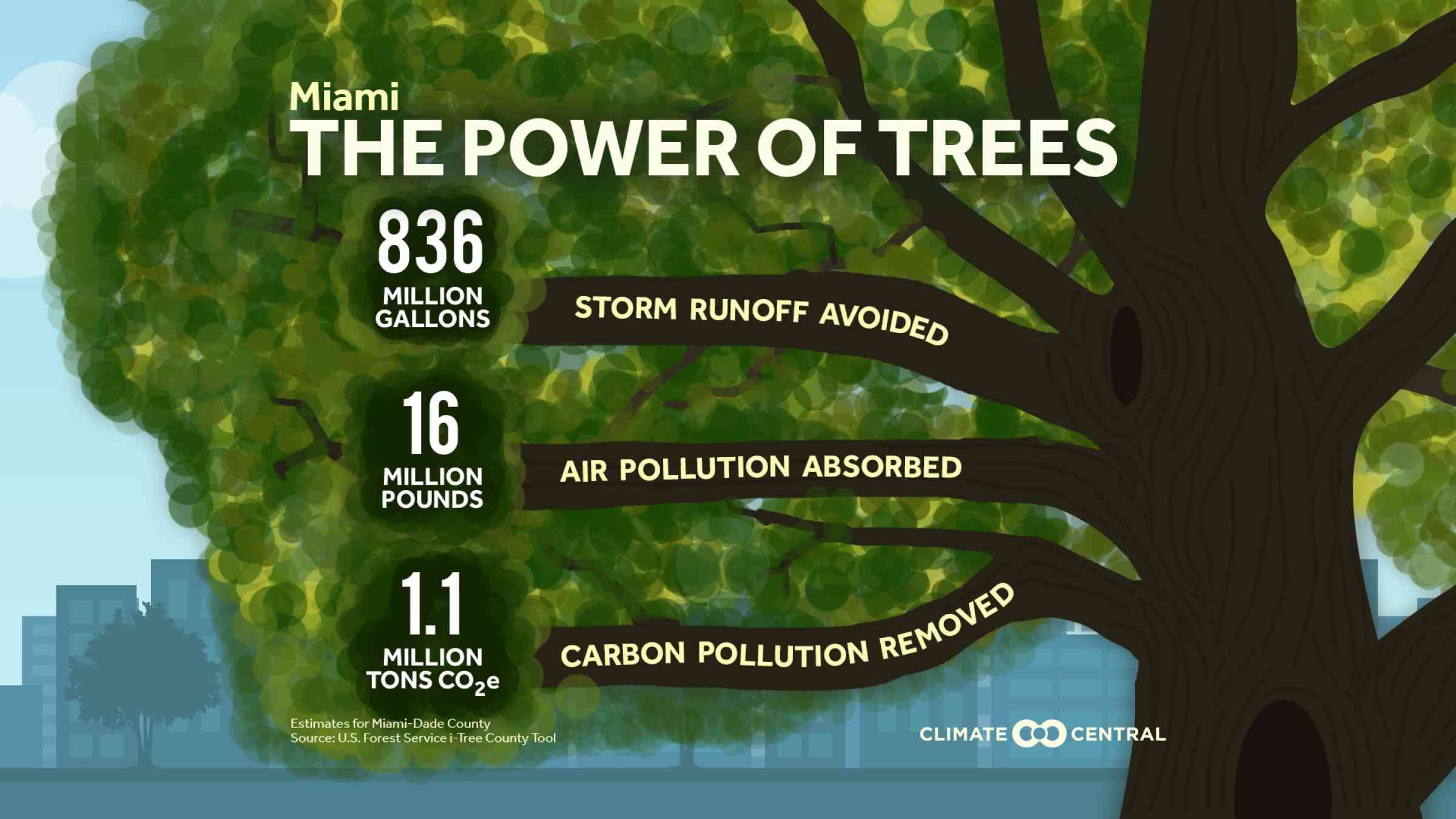Poorly planned urban development
Whether or not disaster risk is factored into investment decisions in urban development will have a decisive influence on the future of disaster risk reduction.
UNDRR, 2013

A new wave of urbanisation is unfolding in hazard-exposed countries and with it, new opportunities for resilient investment emerge.
People, poverty and disaster risk are increasingly concentrated in cities. The growing rate of urbanization and the increase in population density (in cities) can lead to creation of risk, especially when urbanization is rapid, poorly planned and occurring in a context of widespread poverty. Growing concentrations of people and economic activities in many cities are seen to overlap with areas of high risk exposure.
Estimates suggest that by 2050, urban population exposed to cyclones will increase from 310 million to 680 million while exposure to major earthquake will increase from 370 million to 870 million. Urban development investment is also set to increase from US$7.2 trillion in 2011 to US$12 trillion by 2020.
In 2015 the World Economic Forum identified urban planning failures as a distinct risk factor. The significance of this risk is underlined by the fact that in 2012, more than 60% of the area projected to be urban in 2030 was yet to be built.
City regions are becoming increasingly exposed and are creating new patterns of intensive risk; at the same time, poorly planned and managed urban development has generated new hazards and extensive risk:
- Urban development and hazardsUrban development can change the environment or ecosystem through, for instance, the expansion of paved, impermeable areas, which prevent rain from being absorbed by the soil thereby increasing flood hazard, particularly in low-lying areas.Inadequately planned and managed cities also create new risks which threaten to erode current development gains. The lack of adequate infrastructure and services, unsafe housing, inadequate and poor health services can turn natural hazard into a disaster. For example, poor solid waste management can cause blockage to storm water and sewage networks that can lead to waterlogging and flooding. Destruction or damage to infrastructure can lead to water scarcity or contamination. Lack of access to safe housing with good provision for water, sanitation, health care and education affects the capacity of urban residents to recover.There is also the potential for the creation of man-made hazards through poor regulation of construction and industrial practices in urban areas (e.g. the 2013 garment factory collapse in Bangladesh), or inadequate provision of services such as waste management (e.g. the garbage slide killed that over 200 people in an informal settlement in Manila, the Philippines, Reuters-AlertNet, 2000).
- Urban development and exposureThe growing concentration of people and assets in high-hazard areas, along with the marginalisation of the urban poor in particularly unsafe areas drives exposure. This also means disasters are affecting more urban dwellers with increasingly harmful consequences for employment, housing and critical infrastructure, such as roads, power and water supplies. Economic or political reasons for city expansion often outweigh considerations of risk.
- Urban development and vulnerabilityThere are numerous characteristics of current urban planning and development that drive vulnerability including the fact that disaster risk is rarely taken into account in investment decisions. Weak regulation, for instance the lack of enforcement of building codes, planning permission and regulatory investment, often linked to corruption, allow the transfer of risk from construction companies to those who live and work in the buildings. The most vulnerable groups, typically living in poverty, tend to settle and build homes in unsafe (informal) locations and are without adequate provision of infrastructure and critical services. The urban poor are particularly vulnerable to climate change and natural hazards due to their location within cities, and the lack of reliable basic services.
Urbanization mirrors economic growth, so rapid urban development contributes to the concentration of people and assets in hazardous locations, including tropical cyclone and tsunami-prone coastlines and river basins. However, in many cities and countries that have successfully attracted economic investment, investment in disaster risk reduction and the capacities to implement have often lagged behind. As a consequence, new patterns of intensive risk have emerged.https://www.youtube.com/embed/-DxA_tJhIIk
Disaster risk may be increasing faster in rapidly growing small- and medium-sized urban centres than in either rural areas or larger cities .
UNDRR, 2011
As cities grow wealthier, investments in infrastructure and services tend to reduce extensive risks. By contrast, in most low and middle-income countries, urban development is driving new patterns of both extensive and intensive risk, particularly in informal settlements, along with high levels of environmental degradation. Urban development in these countries is socially segregated, characterized by unequal access to urban areas, infrastructure, services and security. Low-income households in particular are often forced to occupy exposed areas with low land values, with deficient or non-existent infrastructure and social protection, and high levels of environmental degradation. The result is a pattern of spatially and socially segregated disaster risk.
Up to 90% of people in urban areas in low-income countries live in unsafe, exposed housing.
UNDRR, 2015a
Historically, much urban growth in low and middle-income countries has occurred through informal mechanisms of land acquisition, building and infrastructure provision. Urban informality, both in the informal economy and in informal settlements is often associated with low pay and high exposure to environmental hazards. Mortality and extensive risks are consequently disproportionally concentrated in low and middle-income countries. However, the living and working conditions of those in the informal sector find themselves to reflect broader issues of poverty and inequality. Likewise, growth in informal settlements is not so much related to a rate of a city’s population growth, but instead to the quality of governance.https://www.youtube.com/embed/CoAdcBYoKXs
Opportunities for building resilience
Rapid urban development may increase disaster risk to unsustainable levels. It is highly likely that new urban growth in South Asia, sub-Saharan Africa and other regions will magnify and exacerbate disaster risk. But as a new wave of urbanisation unfolds in exposed countries, so too do new opportunities for building resilience.
As a formal business sector, urban development involves a range of stakeholders from landowners, to investors, insurance companies, utility providers and regulators. Within urban development, there are a number of opportunities reducing risk from pre-project design (design of brief and site), pre-construction (developing proposals, tender documentation and procurement) to post-completion (including operation and maintenance). Whether decisions are taken to reduce risk reflects the stakeholders involved and the influence on their actions, including risk awareness.
Approaches for lessening and managing disaster risk in urban development include:
- Investment and public regulation, e.g. enforcing safety enhancing regulations including building codes and planning rules. See related story: Major new building standard can map out tornado threat for the first time.
- Resilient infrastructure development, e.g. earthquake resistant infrastructure development. See related story: Teaching the next generation of engineers how to make Puerto Rico’s infrastructure resilient.
- Adequate service provision, e.g. provision and maintenance of electricity, water supply, and drainage systems in urban environments can reduce flood risk, but also increases the vested interest in protecting assets. See related story: Texas electricity grid failure shows how microgrids offer hope for a better future.
- Risk transfer, e.g. a cross-subsidised insurance scheme which provides poor households with catastrophe insurance cover. See related story: As cities bake on a warming planet, insurers cook up heatwave cover.
- Effective risk governance, e.g. integrating disaster risk reduction into city regulations, making it an integral part of local development. See related story: Resilience planning can uncover investment opportunities at the city level.
Building codes, zoning and land-use planning have been central to addressing existing urban risk and the accumulation of new urban risk.
Infrastructure investments at the scale required to meet sustainable economic and development goals will increasingly rely on private sector engagement, particularly in low-income countries where the infrastructure needs cannot be met through public expenditure. Incentives for private urban developers to invest in disaster risk management initiatives already exist. For instance, developers who own and or manage buildings after construction will have a vested interest in protecting profits from losses, including those associated with disasters. Green building is increasingly being mainstreamed in cities’ efforts to develop more socially and environmentally sustainable living spaces. Real estate developers increasingly market aspects such as energy-efficiency, social space and low environmental impacts as factors of competitiveness.
Resilient urban development requires including and cooperating with both formal and informal sectors.
In many low and middle-income countries, the informal sector accounts for a significant proportion of many urban areas and therefore engaging, including and cooperating with those involved in the informal economy and living in informal settlements is essential to building resilience. The informal economy is growing and how it evolves will be critical to the possibilities of a transition to a more inclusive, resilient and green economy. The challenge is to improve upon the existing informal economy - initiatives should look to encourage those segments of the informal sector that promote inclusion or provide urban resilience and green public benefits, such as well-run water vending. Many governments now have policy frameworks in place to upgrade and regularise informal settlements, which may include the installation of risk-reducing infrastructure such as drainage and slope stabilization. In other contexts, policy still focuses on eradication or relocation, which may further exacerbate risks and vulnerabilities.
Resilient urban development goes hand in hand with poverty and inequality reduction, environmental management and climate change adaptation.
Because urban development has a direct influence on environmental degradation, which in turn exacerbates hazards and vulnerability, strategies for building resilience include investment in drainage and water management and the prevention of development in low-lying areas. Ensuring these strategies are implemented in turn relies on good urban and local governance. Although greater progress has been made in adapting cities to climate change than reducing disaster risk, these efforts have given rise to innovative urban practices with risk reduction benefits.

Climate Central, 2023
A growing body of research shows that urban forests—the trees in cities and surrounding communities—and other greenspaces can help cities adapt to climate change. The illustration above shows the benefits generated by trees in the city of Miami, Florida, USA. See results, provided by Climate Central, for more cities here.
Strengthening urban governance to involve and empower citizens and build partnerships with civil society and the private sector is probably the most important factor in addressing urban risk.
UNDRR, 2015a
The Pocket 2015 Global Assessment Report highlights that higher-income countries and some larger cities in middle-income countries have made sound progress in building risk sensitive urban development during the Hyogo Framework for Action. Some of the most promising developments in recent years are cases where cities have been able to regain control of their planning and management and strengthened their urban governance through innovative partnerships between local governments, households and communities. Over 2000 cities have signed up to the UNISDR’s Making Cities Resilient Campaign.
Urban and local governance influences not only how and where cities develop, but in particular, whether the urban poor have access to safe land, housing and the essential infrastructure and services required to live in security. Many low and middle-income countries have lacked the capacities to plan and manage urban development in an appropriate and risk-sensitive way, in particular in small urban centres. As a consequence, urban disaster risks have grown at a faster rate than they have been reduced. However, in all income geographies, there exist notable exceptions of well-governed cities that have managed to provide infrastructure and services for their populations.
Last updated on: 30 June 2023
Related stories
"In addition to mitigating disaster risk, urban flood resilience interventions offer broader co-benefits for surrounding communities’ physical and mental health."
Resilient buildings make urban Morocco safer
"Comprehensive and effective land use planning and building regulations are needed to promote the safety and longevity of buildings in Moroccan cities. "
Canada heatwave: How could cities adapt to rising temperatures?
"As communities in Canada and the U.S. Northwest break heat records, cities long accustomed to dangerous heat have ideas on coping."